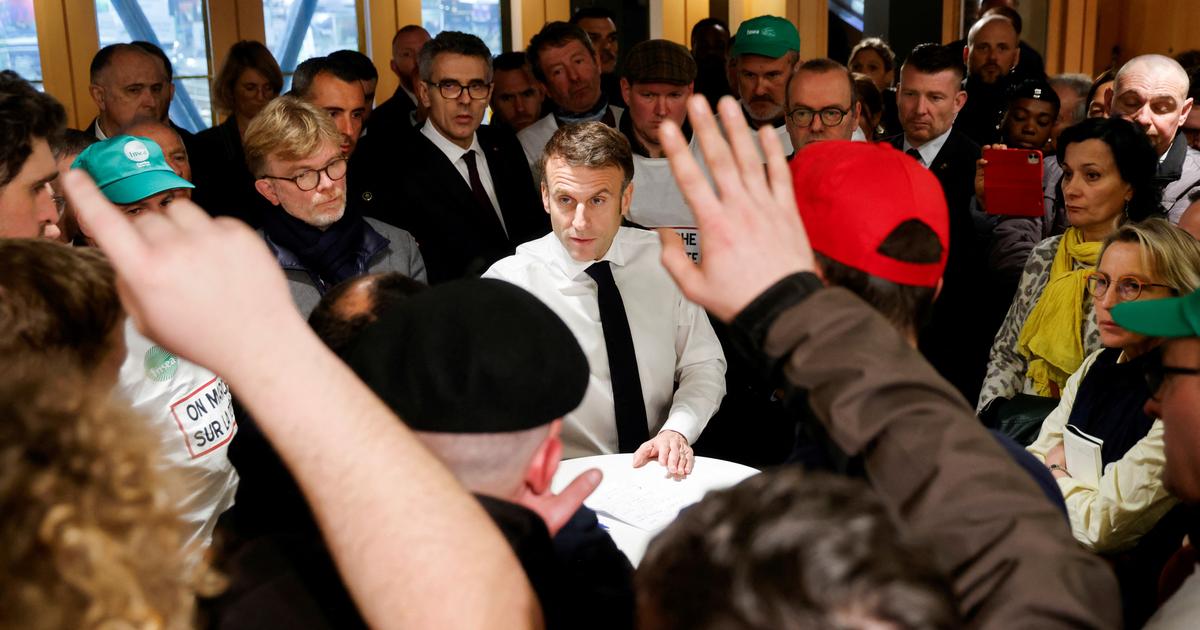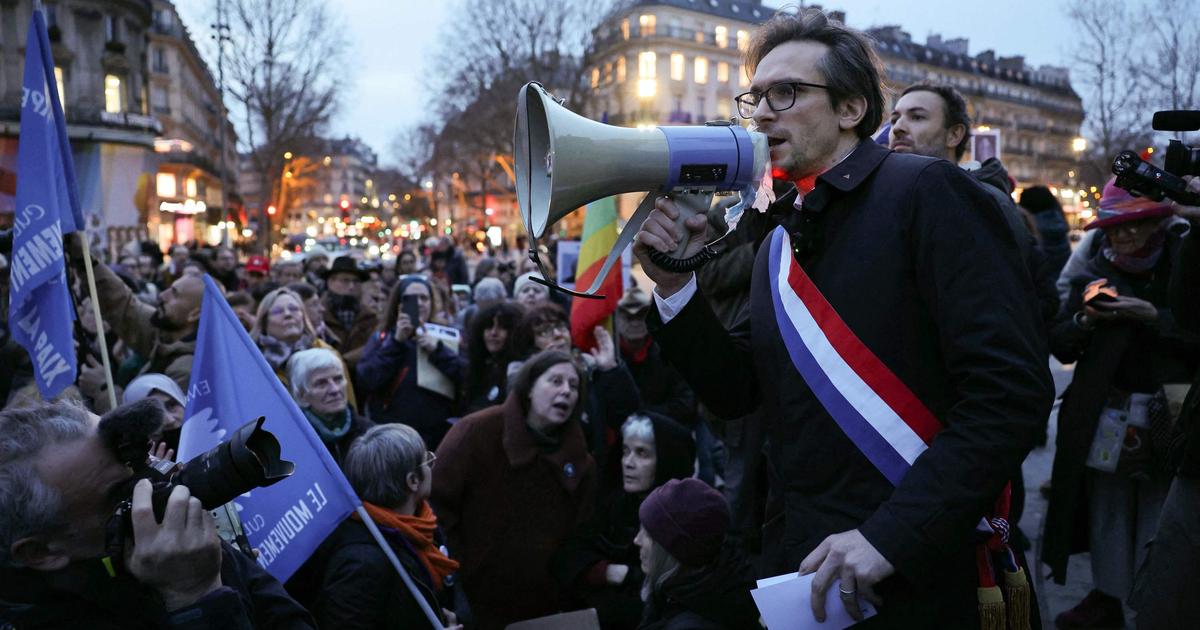The Teatro Colón presented
Resurrección
to commemorate
40 years of the recovery of democracy
in Argentina.
The unusual opening of the season outside the theater, in the Ocher Pavilion of La Rural, had to do with the
singular stage production
of Symphony No. 2,
Resurrection
, by Gustav Mahler, by Romeo Castellucci, with the musical direction of Charles Dutoit at the helm of the Buenos Aires Philharmonic Orchestra, together with the soprano
Jaquelina Livieri
and the mezzo-soprano
Guadalupe Barrientos
.
The powerful production was conceived by Castellucci for a large informal space, where there is normally no fiction.
There, according to the director, his proposal to
establish new relationships between the scene and the music
develops more freely.
The work of exhumation of the bodies, in a moment of "Resurrection".
Colon Theater Press
When friction is virtue
That points, among other things, the staging of the symphony.
It is not an illustration,
the setting and the symphony function as two completely different objects that enter into a virtuoso friction
.
Like the effect of indifference of the precious melodies of the second movement while bodies are being exhumed.
The same effect of indifference of nature stops the horror that is anticipated with the song of the birds, at the beginning of the work, when the bodies are discovered.
Without a precise meaning,
the work advances without unequivocal meanings, and this is one of its great attractions
.
It is not an ideological theater, there is no pedagogy or didactics.
Castellucci, through Mahler, puts
horror before the viewer's eyes without renouncing beauty
.
He creates a kind of cathartic, disturbing ritual that updates the Mahlerian sense of resurrection: today its meaning is, thanks to the spirit of collaboration, exhuming bodies to give a dignified burial to those who were victims of various contemporary tragedies.
Machines working on stage, in "Resurrection", the setting of the Columbus in La Rural.
Press Photo Colon Theater
The first thing that is shown to the viewer, beyond the pit in which the Philharmonic Orchestra and the choir are located, is a huge expanse (600 tons) of black earth.
On a soundscape, with birds,
a majestic white horse appears
through one of the two doors, walks through the scene, sniffs around and reveals a remains, which shortly after will be identified as human.
The orchestra attacked the symphony's poignant opening with precision.
The tone of a funeral rite that prevails in the first movement coexists with the work of exhuming the bodies.
After the initial shock, the UNHCR (United Nations Refugee Agency) workers carry out the slow process - little by little it is becoming more mechanized - of exhumation, identification, placement of the bodies in white bags, and finally their transfer in
vans towards a worthy destination
.
Everything happens to the rhythm of the music that persists in the first four movements - the five-minute pause that Mahler indicated after the first movement was respected -, crossed by doubts about life and death, moments of vitality, prior to the final judgment and salvation without conditions.
But this dynamic arc -according to the plot that Mahler wrote and then discarded- does not affect the dramaturgy, which goes against the grain of the monumentality of Mahler's symphony, with diminishing elements and minimal gestures.
From the initial shock to the mechanized work of exhumation, then the fatigue and finally the relief.
General shot of “Resurrección”, with the horse on stage and the orchestra.
Photo Emmanuel Fernandez
The exhumation works conclude with the final movement of the work -with the words of Klopstock's poem, and intervened by Mahler, "you will rise again, if you will rise again"-.
There is still one last woman on the scene, desperately rummaging through the earth for more bodies.
Before the ascent towards the luminous finale, the sign of hope that the voice of mezzo-soprano Barrientos enunciates with the text Urlicht (primitive light) was shocking.
Like the intervention of Jaquelina Livieri and the Vocal Group of Diffusion, under the direction of Mariano Moruja.
Music, in the hands of a great director
It was a great success for Castellucci to leave music as the only action at the end and minimal lighting.
The metamorphosis experienced by the Philharmonic Orchestra when placed in the hands of great conductors such as Charles Dutoit is extraordinary (exceptionally, on this occasion it had the great work of Kakhi Solomnishvili as coach).
In all its ranks, and each of its soloists,
the orchestra did a marvelous job from end to end
.
UNHCR (United Nations Refugee Agency) workers and exhumation work at "Resurrection".
Press Photo Colon Theater
Mahler's work played like an energetic fresco from start to finish.
The amplification did not affect the balance and the orchestral tone.
Neither the choir nor the solo voices.
On the other hand, the expressiveness of the dynamic contrasts did suffer, the constant noise of the air conditioning drowned out the silences and the softer sounds.
But
nothing affected the most captivating moment at the end of the work
: the rain falling on the empty stage, while the orchestra was playing.
Above this landscape, the voices of the dead seemed to return through the choir, with all the expressive power of the human voice singing the text
Resurrection
by Friedrich Klopslock.
File
Resurrection
Rating
: Excellent
Scenography, costumes and stage direction
: Romeo Castellucci
Collaborator in staging
: Filippo Ferraresi
Orchestra
: Buenos Aires Philharmonic
Director
: Charles Dutoit
Director of the Broadcasting Vocal Group
: Mariano Moruja
Soloists
: Jaquelina Livieri and Guadalupe Barrientos
Hall
: Pabellón Ocre de La Rural (Av Sarmiento 2704).
Resurrection
, by Gustav Mahler, is a co-production with the Aix-en-Provence Festival in France
WD
look also
Almost 10 years after the success of Wild Tales, Damián Szifron premieres a Made in Hollywood film
Rain Dogs: a black comedy about a dysfunctional family, with little glamor and a lot of punk attitude




/cloudfront-eu-central-1.images.arcpublishing.com/prisa/EMKFSDXDMVCWNCFCHDQKH6CFG4.jpg)









